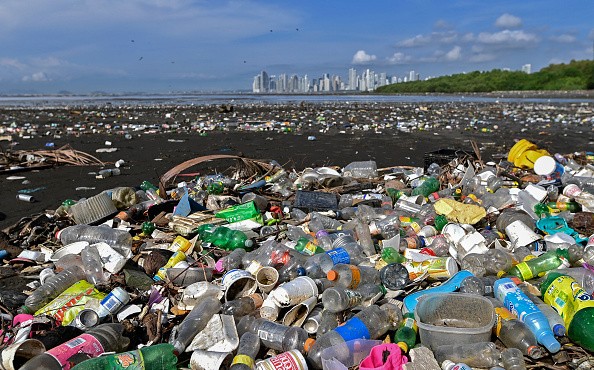According to research, microbes in seas and soils worldwide evolved to consume plastic.

The study looked at more than 200 million genes identified in environmental DNA samples and discovered 30,000 distinct enzymes capable of degrading 10 different forms of plastic.
The research is the first large-scale worldwide assessment of bacteria's plastic-degrading capacity, and it discovered that one out of every four species examined has a relevant enzyme. According to the researchers, the quantity and kind of enzymes revealed matched the amount and type of plastic pollution in various sites.
According to the researchers, the findings "give evidence of a quantifiable influence of plastic pollution on the global microbial ecosystem."
Millions of Plastics in the Ocean

Every year, millions of tons of plastic are dumped into the environment, and pollution has now spread across the globe, from Mount Everest's top to the deepest oceans. It is critical to reduce the quantity of plastic used and collect and treat garbage properly.
However, many plastics are difficult to decompose and recycle at the moment. Enzymes could be used to quickly break down plastics into their constituent parts, allowing new products to be made from old ones and reducing the need for virgin plastic production. Many novel enzymes will be researched and developed for commercial usage due to the new findings.
Prof Aleksej Zelezniak of Chalmers University of Technology in Sweden said, "We found multiple lines of evidence supporting the fact that the global microbiome's plastic-degrading potential correlates strongly with measurements of environmental plastic pollution - a significant demonstration of how the environment is responding to the pressures we are putting on it."
"We did not anticipate to uncover such a big number of enzymes across so many distinct bacteria and environmental settings," said Jan Zrimec, also of Chalmers University. This is a startling revelation that highlights the scope of the problem."
Microbes Evolving
According to the researchers, microbes have evolved to deal with plastic because of the rapid increase in plastic manufacturing during the last 70 years, from 2 million to 380 million tons per year. The study, published in the journal Microbial Ecology, began by creating a database of 95 microbial enzymes previously known to digest plastic, commonly found in bacteria in landfills and other areas where plastic is abundant.
Comparing Samples
The researchers then sought comparable enzymes in environmental DNA samples collected from 236 other places throughout the world by other researchers. Notably, the researchers ruled out any false positives by comparing the enzymes initially found with enzymes from the human gut, which does not have any known plastic-degrading enzymes.
About 12,000 novel enzymes were discovered in seawater samples collected from 67 sites and three depths. The results indicated that more profound levels of degrading enzymes were consistently greater, corresponding to larger quantities of plastic pollution known to occur at lower depths.
The 18,000 plastic-degrading enzymes were found in soil samples collected from 169 locations in 38 nations and 11 distinct ecosystems. Soils have more phthalate-added plastics than seas, and researchers discovered more enzymes that destroy these compounds in land samples.
According to the researchers, over 60% of the novel enzymes did not fit into any recognized enzyme classes, implying that these compounds destroy plastics in previously unknown ways.
"The next step would be to examine the most promising enzyme candidates in the lab to learn more about their capabilities and the rate at which they can degrade plastic," Zelezniak added. "From there, you might construct microbial communities to degrade certain polymer kinds with tailored degrading capabilities."
2016 Discovery
In 2016, a Japanese garbage dump yielded the first insect that eats plastic. In 2018, scientists altered it to understand more about how it developed, but in the process, they accidentally generated an enzyme that was even better at breaking down plastic bottles. In 2020, further modifications raised the depreciation rate by a factor of six.
Carbios, a firm founded in 2020, developed a mutant enzyme that breaks down plastic bottles for recycling in hours. A bacterium that feeds on the poisonous material polyurethane, which is commonly thrown in landfills, has also been found by German scientists.
Scientists discovered this week that the quantities of microplastics found in foods consumed by individuals caused harm to human cells in the lab.
For more environmental news, don't forget to follow Nature World News!
© 2025 NatureWorldNews.com All rights reserved. Do not reproduce without permission.





